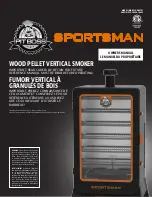
11
Loudspeaker Cables
We recommend that you use loudspeaker cables terminated with high quality spade lugs, as these
provide the best electrical connection. The lugs should be either soldered or crimped to the
loudspeaker cable – the latter is preferred. We do not recommend the use of bare wire to connect to
the loudspeaker terminals. This produces an inferior connection that will further degrade as the bare
conductors become tarnished.
NOTE:
Do not switch on the power amplifier until the DDD
shipping covers have been removed as shown in section 6.
6. REMOVING THE DDD SHIPPING COVERS
NOTE:
Do not touch the DDD driver diaphragms.
If your loudspeakers are fitted with titanium DDD drivers, these will be covered with either a layer of clear
film or cardboard to protect them whilst in transit. This should now be removed. The film should be
peeled off by hand. Do
not
use a knife.
To remove the cardboard protector, slit the adhesive tape securing it by sliding a
short
bladed knife
between the two layers of cardboard whilst holding the knife as shown in figure 9. Do not cut in the way
shown in figure 10, as there is a danger that you will cut the DDD driver diaphragm.
7. LOUDSPEAKER BREAK IN
Like all audiophile equipment, German Physiks loudspeakers require a break in period from new
before they reach their optimum level of performance. Initially the sound may seem harsh. Please do
not be concerned. The sound will become more relaxed and smooth as the break in progresses. The
music used for the break in should be dynamic in order to properly exercise all the components of the
loudspeakers.
For the first 10 hours play the loudspeakers at low level only. This is a level where you would easily be
able to carry out a conversation without needing to raise your voice.
After this, the loudspeakers may be played at normal listening levels. The break in process will be
complete after 200 to 300 hours.
Figure 9. The Correct Way to
Remove the DDD Driver Cover
Figure 10. The Wrong Way to
Remove the DDD Driver Cover

































